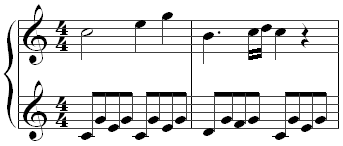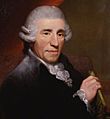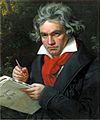Classical music period facts for kids

The Classical music period is the time from about 1750 to 1820 when Haydn, Mozart, Beethoven, and Schubert were the most famous living composers.
We often talk about “classical music” meaning European music which is not pop music or jazz or folk music. It is music which has been written by composers who have studied the art of composition. The article Classical music talks about classical music in this sense.
This article is about “Classical music” in the late 18th century and the early 19th century. The word “classical” is often used to refer to the arts of Ancient Greece and Rome. It has also come to mean any art form which has become very famous and is remembered for centuries afterwards. In music the Classical period comes between the Baroque and the period of Romanticism.
In some ways Classical music is often simpler than the music of the Baroque composers. There is often a tune with a simple accompaniment using broken chords called an “Alberti bass”. For classical composers the form of the piece was very important. Composers started their work with a tune (theme) and this tune would be developed in different ways: put in different keys, changed from a fast to a slow tune, changed from major to minor or from minor to major.
Some of the most famous composers of the Classical period in music are:
- Carl Philipp Emanuel Bach (1714–1788)
- Christoph Willibald Gluck (1714–1787)
- Joseph Haydn (1732–1809)
- Luigi Boccherini (1743–1805)
- Muzio Clementi (1752–1832)
- Wolfgang Amadeus Mozart (1756–1791)
- Jan Ladislav Dussek (1760–1812)
- Ludwig van Beethoven (1770–1827)
- Franz Schubert (1797–1828)
Images for kids
-
A modern string quartet. In the 2000s, string quartets from the Classical era are the core of the chamber music literature. From left to right: violin 1, violin 2, cello, viola
-
Gluck, detail of a portrait by Joseph Duplessis, dated 1775 (Kunsthistorisches Museum, Vienna)
-
Haydn portrait by Thomas Hardy, 1792
-
The opening bars of the Commendatore's aria in Mozart's opera Don Giovanni. The orchestra starts with a dissonant diminished seventh chord (G# dim7 with a B in the bass) moving to a dominant seventh chord (A7 with a C# in the bass) before resolving to the tonic chord (D minor) at the singer's entrance.
-
Portrait of Beethoven by Joseph Karl Stieler, 1820
-
View of Vienna in 1758, by Bernardo Bellotto
See also
 In Spanish: Música del Clasicismo para niños
In Spanish: Música del Clasicismo para niños
 | Mary Eliza Mahoney |
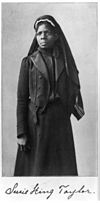 | Susie King Taylor |
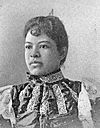 | Ida Gray |
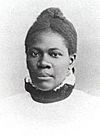 | Eliza Ann Grier |


